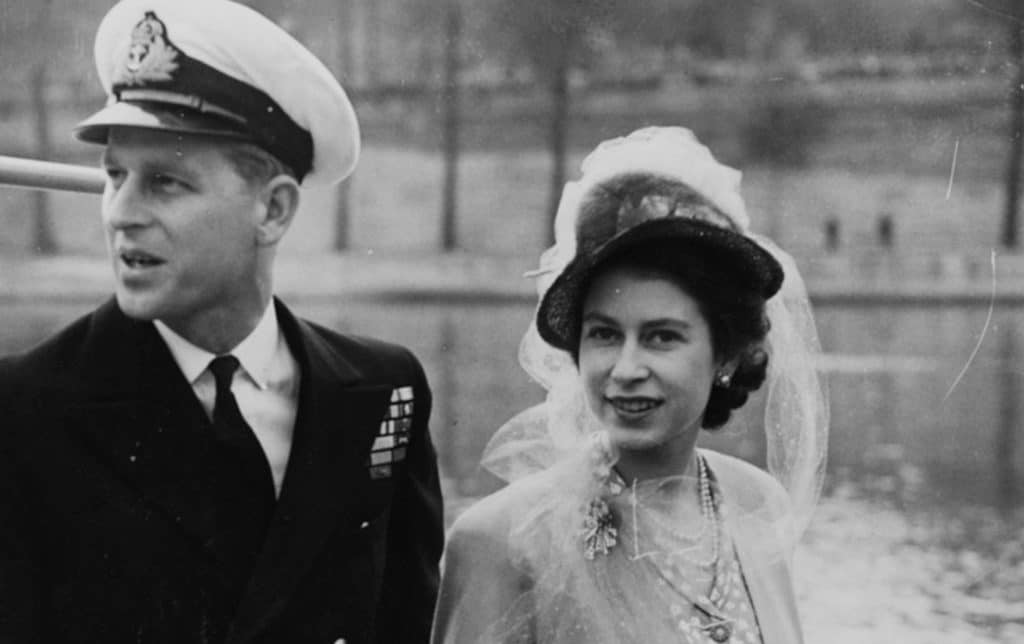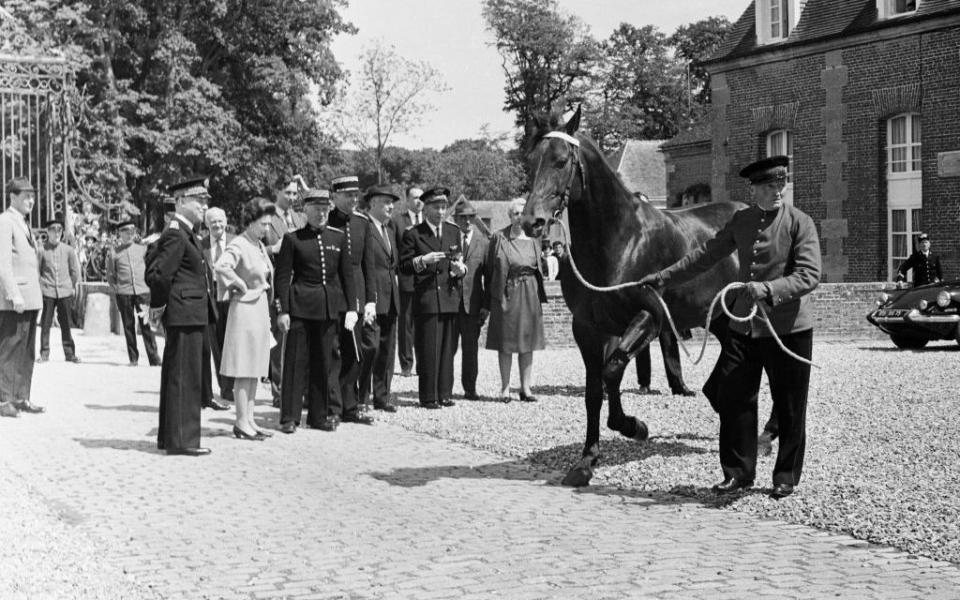Why the French are obsessed with our Royal Family

For a people which rabbits on about republicanism as if they invented the thing, the French aren’t half obsessed with royalty – and, most notably, the British monarchy. Coverage of the Queen’s death and its aftermath has been wall-to-wall. Transmission of the funeral-related material on Monday started on both main TV channels at 6am and went on, apparently, until even the most fervent French republican must have been beaten into submission.
If we add in the four 24-hour news channels, it’s estimated that between seven and eight million French people were before their screens at peak moments. According to polls, a majority of the French thought that the coverage since September 8 had been overdone – one academic referred to “infobesity” – but it seems they were watching it on TV all the same. That Charles III’s first overseas trip as King will be to France will only reflect well on Macron domestically.
And why wouldn’t it? Having ill-advisedly shortened their own royals a couple of centuries ago, our neighbours seek substitutes wherever they are to be found. Juan Carlos came in handy in the past, but has slipped severely in the ratings of late. Meanwhile, the French consider Monaco’s Albert and Charlene almost as their own, notably since the birth of seven-year-old twins Jacques and Gabriella.
There is interest, too, in the various Low Country and Scandinavian monarchies, not least because the Swedish royal family has French roots in Pau in the foothills of the Pyrenees (long story). That aside, the interest surfaces only intermittently, at times of marriages, deaths and corruption scandals.
None of these has ever rivalled the Windsors for column inches and continuity of fascination, however. Magazines like Gala, Point de Vue and Paris Match have long been bursting forth with pretty much weekly bulletins on William and Kate, and the various travails of Harry and Meghan.
But our queen – “The Queen,” said President Macron – stood apart and above. She was revered sufficiently to suggest that, were she to emulate her predecessor Edward III and claim the throne of France, there’d be a decent vote in favour. There would, of course, be votes against. Responding to the government’s call for municipal flags to be lowered to half-mast in honour of the Queen, the mayor of Bourges replied: “Why should I pay tribute to a foreign monarch?” (Which might be thought a bit of a nerve from the mayor of a town well-known as the bolt-hole of monarchs.)

But those TV viewing figures tell few lies. Nor do the ceaseless enquiries about my state of sadness from French friends and neighbours. No other event in any other foreign nation – bar perhaps a football World Cup and, conceivably, the Olympics – has ever generated such interest and emotion during my decades here. It may be that they’re “against”, but they are talking about it.
And no wonder. The lives of our royal families have been entwined with France (or what was to become France), since William the Bastard landed his Norman troops at Pevensey and swiftly became “the Conqueror”.
Later, our Plantagenets were HQ’ed across the Channel. Henry II was born in what is now Le Mans town hall, before marrying Eleanor, bagging Aquitaine and running an empire from the Cheviots to the Pyrenees. Later yet, during the Hundred Years War, our Henry VI was crowned king of France in 1431, though this didn’t work out quite as planned. Losing the war scarcely helped his cause.
Moving swiftly across the centuries, Queen Victoria was maybe more Francophile than expected so soon after the Napoleonic unpleasantness. She and Albert were great hits in Paris. Widowed, she took to spending winters on the Riviera where her extreme popularity was explained by her handing out of alms to all-comers, by her friendship with the likes of Sarah Bernhardt – and by the fact that having the most famous woman in the world among them was great PR for places like Hyères and Nice. On her deathbed, she allegedly said: “If I were in Nice, I would get better”. I’ve often wondered why the city didn’t adopt this as its motto.

Meanwhile, her son, the Prince of Wales, was man-in-charge-of-partying across the Côte-d’Azur. He also found time to pay his respects to festivities in Paris (with, among others, Giulia Beneni, celebrated as “the number one whore of Paris”), Pau and Biarritz – where, as Edward VII in 1908, he appointed Herbert Asquith as PM in his suite in the resort’s Hotel du Palais. Affairs of state were done differently back then.
Edward’s grandson, the fleetingly royal Edward VIII, took to the Loire Valley after abdication. There in June 1937, in the Château de Candé, near Tours, he wed his new bride. The almost-royal couple were married in the library, music provided by Candé’s three-storey organ. With a certain inevitability, they carved their Christian names on the organ’s wood panelling.
Which brings us to Elizabeth II, perhaps the most francophile and francophone of all recent monarchs. She made more state visits to France than to any other European country – plus numerous private jaunts. Her first official trip, and first trip outside Britain, came with Philip in 1948. She travelled in a railway carriage filled with flowers by French Rail (good luck asking for that sort of treatment these days) and was entertained by both Edith Piaf and Henri Salvador. Parisian crowds thronged by the hundred thousand. She allegedly reacted: “How could they have guillotined their own king?”

Her desire to see a play by Jean-Paul Sartre was, though, apparently thwarted by the British embassy. She maybe never knew what a close shave this had been.
State visits started in 1957, the Elysée Palace being informed on this occasion that “Her Majesty has a small appetite but will eat just about anything, except caviar, oysters and shellfish.” Requests on later visits for foie gras set her apart from many of her subjects (as well as from her son, perhaps), but gained approval in France.
Ten years later, she made a private visit to the stud-farms (‘haras’ in French) of Normandy, notably the national Haras du Pin, a sort of 18th-century stately home for horses. You might follow Her Majesty’s example here: the Haras is terrific but also handy for side trips to camembert and cider country, not to mention inland sites of the 1944 Battle of Normandy.

The trip of 1972 took the royal couple not only back to Versailles but onto the Camargue and Provence, and an overnight at the Oustau-de-Baumanière at Les Baux de Provence. The hotel and restaurant remain among France’s finest, where you may follow the royals in – just as long as your hedge fund has had a good year.
Later, as in other years, the Queen visited the Loire Valley – mainly Chambord and Chenonceau. These would also be among my top three of the dozens of Loire chateaux, the first for its vast magnificence, the second for its feminine-inspired elegance. As she said on one occasion (in French, of course): “A visit to France is never perfect if it doesn’t include the Loire Valley”. Quite. On this trip, she summed up cross-Channel relations brilliantly, saying Latin Europe was to Anglo-Saxon tradition as oil is to vinegar, but “both are necessary to season the salad”.
In 1994, Her Majesty inaugurated the Channel tunnel with her (very) distant cousin, President Mitterrand. (The two apparently shared a noble 17th-century Poitevin ancestor, one Eléonore Desmier d’Olbreuse.) Ten years later, the Queen made her fourth visit and, 10 years after that, her fifth and final official trip across the Channel. This involved what was known as “psychodrama of the hats”.

On discovering that the roof of the presidential Citroën DS5 was unlikely to be high enough to accommodate both the Queen and her hat, alarmed French protocol chaps sought an alternative. Dismissing the suggestion of a People Carrier (“For the Queen??”), they bagged a Renault VelSatis which, though not very good at motoring, would allow the Queen to sit up straight, be-hatted.
It also proved an interesting change from the then-new Diamond Jubilee state coach she was to use on formal UK occasions – emphasising, perhaps, one of the essential differences between a monarchy and a republic, a difference underlined in recent ceremonial days.
After joining 19 other heads of state in Normandy for the 70th anniversary of the D-Day landings, she returned to Paris to visit the Flower Market on the Ile-de-la-Cité. Henceforth, the market was to be known as Le Marché Aux Fleurs Reine Elizabeth II.

The welcome extended to the Queen on all these occasions wasn’t simply that accorded to a celebrity, though certain French commentators claim there’s little difference. Nor is the interest only ironic, as smarter folk like to pretend. Whatever these people say, it’s obvious that the Queen, especially, had real status in France.
Of course, she had entertainment value but she was also an embodiment of so many of the things which the French admire in the British – and admired simply in general, never mind the British connection: the spirit of “fair-play” (for which there’s no French word), restraint, elegance and resolution under stress, the sense of duty and getting on with stuff without invoking personal trauma – plus a frankly outstanding taste in headgear.
And, somehow, her very presence and bearing suggested that Britain is a country worthy of respect. Certainly – listen up, British republicans – she generated a warmth and fascination within France which was experienced by no other person and no other nation. As my young neighbour said on Monday: “No-one else anywhere is going to get this kind of attention in France. Not even a French person.” It goes without saying that the British also exasperate the French, as vice versa. But it’s the exasperation of close-ish relatives. As the Queen herself once said, we may drive on different sides of the road, but we’re going in the same direction.
Vitally, the Queen was a living link with a shared recent past. France’s former ambassador to the UK, Bernard Emié put it well years ago: "With Queen Elizabeth II, we meet our own history, but also our liberty. For it’s to her people, to her father George VI, to the man who became her prime minister, Winston Churchill, that we owe the welcome extended to General de Gaulle and the Free French in London – and then, with the Allies, the liberation of France."
There are ties which go beyond politics, trade – and the trading of insults. The Queen, as no-one else, was their incarnation. Somewhere deep in their republican souls, the French seem to recognise this universality. Even the most sophisticated still talk with awe of Carla Bruni’s legendary curtsey before the Queen in 2008.


